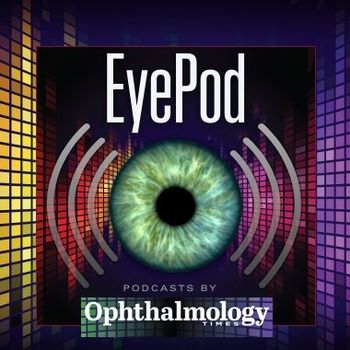
Wilmer Eye Institute researchers identify key molecular pathway linking oxidative stress to age-related macular degeneration

Both oxidative stress and HIF-1 have been previously implicated in the development of AMD.
Wilmer Eye Institute researchers at Johns Hopkins Medicine have found how a molecular pathway, which involves oxidative stress and the protein HIF-1, contributes to the type of age-related macular degeneration (AMD) a patient could develop. Both oxidative stress and HIF-1 have been previously implicated in the development of AMD. This research can be found in the December issue of Proceedings of the National Academy of Sciences.1
Investigators focused on the changes in HIF-1 levels caused by oxidative stress in 2 eye cell populations: retinal pigment epithelium (RPE), which protects the retina and filters light, and retinal photoreceptors, nerve cells that convert light to brain signals. They began by inducing oxidative stress in RPE cell lines, adding chemicals to create an imbalance of oxygen molecules. In response, the cells overproduced HIF-1 and VEGF, promoting blood vessel growth in the retina and mimicking wet AMD.1
Researchers them conducted these same tests on cells in low-oxygen environments, as low oxygen is known to contribute to blood vessel overgrowth in wet AMD. HIF-1 and VEGF increased at even higher rates and concentrations.
In the press release,1 Akrit Sodhi, MD, PhD, associate professor of ophthalmology and the Branna and Irving Sisenwein Professor of Ophthalmology at the Johns Hopkins University School of Medicine and Wilmer Eye Institute, shared his thoughts on these outcomes. He said, “This may be why oxidative stress in older patients, who also have other predisposing factors to low oxygen in the retina, leads to the wet form of age-related macular degeneration.” He went on to explain that blood vessel growth is likely the eye’s attempt to increase oxygen flow when it’s starved for the molecule, but in wet AMD the eye overcompensates leading to vision loss.
Though this research demonstrates how wet AMD may form, it did not show how oxidative stress contributed to advanced dry AMD. In fact, researchers saw that RPE cells in the tissue they tested were resistant to cell death from oxidative stress. Therefore, they turned to retinal photoreceptors to understand dry AMD’s origins and the role of oxidative stress in disease development.
Researchers induced oxidative stress in human and rodent photoreceptors, which led to an increase in HIF-1 production. These photoreceptors were remarkably sensitive to oxidative stress, which caused cell death in the tissue and mimicked dry AMD.
Taking the research one step further, the investigators then removed HIF-1 in the cells before creating oxidative stress. Cell death increased in HIF-1’s absence, showing HIF-1’s protective role against the damaging effects of oxidative stress in photoreceptors and in dry AMD.1
Sodhi shared, “This is an early step towards understanding molecular mechanisms whereby HIF-1 contributes to both wet and dry AMD. Our studies demonstrate how two cell populations react to oxidative stress: both alter HIF-1 levels, but in one cell this response can promote wet AMD and in the other it can protect against advanced dry AMD. Wet and dry AMD may be different sides of the same coin – if tissues in the eye are pushed to protect you from one, you may end up getting the other.”1
Reference:
Johns Hopkins Medicine Scientists Uncover Molecular Link Between Wet and Dry Macular Degeneration. John Hopkins Medicine. December 5, 2023. Accessed December 6, 2023. https://www.hopkinsmedicine.org/news/newsroom/news-releases/2023/12/johns-hopkins-medicine-scientists-uncover-molecular-link-between-wet-and-dry-macular-degeneration
Newsletter
Don’t miss out—get Ophthalmology Times updates on the latest clinical advancements and expert interviews, straight to your inbox.













































